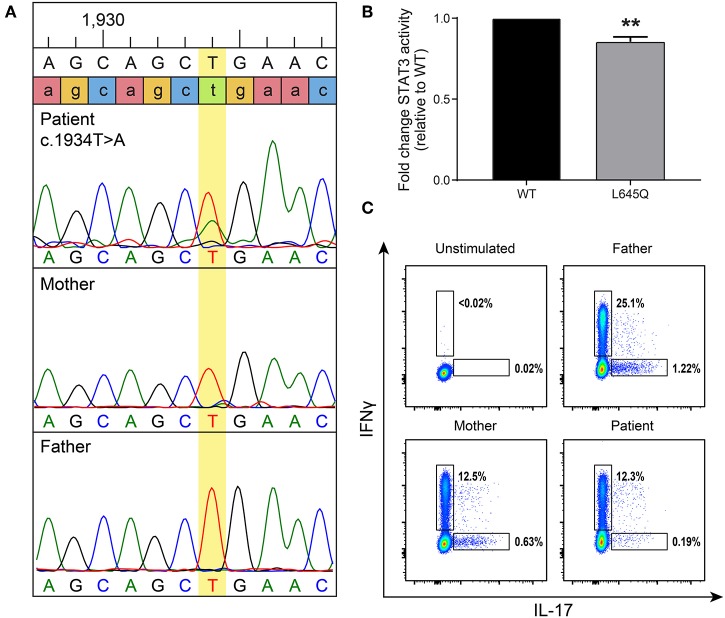Figure 2.
A de novo mutation in STAT3 has decreased basal activity and leads to low Th17 cells. (A) Targeted Sanger sequencing revealed a STAT3 mutation, c.1934T>A (leading to p.L645Q), in the patient that was not present in his parents. (B) To measure basal levels of STAT3 activity a luciferase assay was performed. Wild-type (WT, black) or mutant (gray) STAT3 plasmids were co-transfected into STAT3-deficient cells along with a STAT3-responsive luciferase reporter. STAT3 activity is shown as a ratio of firefly/control normalized to WT. Data represent 3 experiments ± SEM, **p < 0.01 as it designates the level of significance (unpaired t-test). (C) Intracellular cytokine staining was performed to detect Th17 cells produced after stimulation. A gate was placed on CD3+CD4+ T-cells, then they were assessed for the ability to produce IL-17 and interferon-γ (IFNγ) as a positive control. The patient produced reduced levels of Th17 cells compared to his parents.

